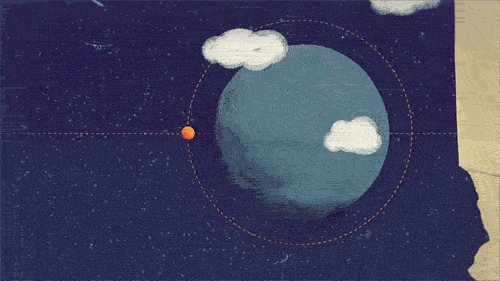Dig season was coming to a close when amateur archaeologists in southeast England made one of their most important discoveries to date: a Roman mosaic, dating back more than 1,000 years.
Since 2015, the dig led by the Boxford History Project and the Berkshire Archaeology Research Group has brought together local archaeology enthusiasts and professional archaeologists. The team's work has focused on three Roman sites near the small village of Boxford.
But when the first, vibrant colors of the mosaic poked through the broken dirt of the excavation site, "I was stunned into silence," said the leader of the Boxford History Project, Joy Appleton, in an interview with the New York Times.
 Anthony Beeson, a member of the Association for Roman Archaeology, initially thought it might be a hoax.
Anthony Beeson, a member of the Association for Roman Archaeology, initially thought it might be a hoax.
"It was so unlike anything that has ever turned up in this country," he said in an interview with science news outlet Live Science.
Luckily for Appleton and Beeson, the mosaic was not a hoax but instead a glimpse into life in Britain under ancient Roman rule.
The mosaic itself is large, measuring just over 19 feet long. So far, only one side of the panel has been revealed by excavators, but characters and beasts from Roman myths can be clearly seen. Initial studies of the scene depicted on the mosaic reveal it shows the mythological character Bellerophon at the court of characters believed to be either Lobates or Proteus.
At the bottom of the mosaic is a creature known as the chimera, which had a lion's head, a goat's torso, a serpent's tail, and breathed fire. In Greek legends, Bellerophon was sent to kill the chimera, and the scene depicts the creature ready to attack.
The mosaic may also depict the Greek hero Hercules fighting with a centaur.
HOT ON WEB
In a statement, Roman expert Neil Holbrook explained that the find was one of the most important mosaics ever found in Britain.
"Not only is it a fantastic new piece of Roman art from Britain, but it also tells us about the lifestyle and social pretensions of the owner of the villa at Boxford," he stated. The villa's owner, Holbrook claimed, was likely of British origin and trying to forge a close relationship with the Romans. By commissioning a mosaic with Roman iconography, it may have signaled a willingness to embrace the Roman government that occupied Britain.
The Roman Empire invaded ancient Britain in 43 A.D. and occupied the region until 410 A.D. During this time, Britain became one of the western fronts of the expansive empire, and a number of representatives built villas throughout the country. Mosaics have been found in England of varying quality and preservation, but the archaeologists in Boxford claim this find is significant for its intact quality and what it can reveal about the inhabitants who commissioned it.
In a press release detailing the find, Cotsworld Archaeology, one of the organizations that contributed to the excavation, explained that the site likely contained a moderately sized villa with a series of adjoining rooms. They believe the mosaic and a bath suite where residents could plunge into a cold-water pool were added over time.
While the mosaic has been the most exciting find from this summer's dig, it wasn't the only artifact found at the site. During the beginning of the year, the team found a child's bracelet and coins. Volunteers also uncovered what they theorize was a barn and a courtyard gateway.
Excavations have finished for this season, but the team of archaeologists and enthusiasts plans to return to the site next year in the hopes of unearthing more remnants of an ancient society.
loading...























No comments:
Write σχόλια